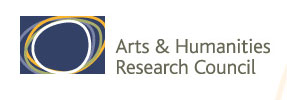Mediating Post-Soviet Difference:
An Analysis of Russian Television Representations
of Inter-Ethnic Cohesion Issues
The project addresses Russian state television's approach to ethnic tension. It will contribute both to our grasp of an urgent issue in transition countries, and to the study of the contemporary media's role in fostering community cohesion.
Aims
The project explores the media’s nation building function in the particular context of contemporary Russia. The focus is on news and related programming on the main national TV channel (Channel 1). Based on the notion that even Russia's highly regulated media system accommodates a circulation of official and unofficial meanings, the aim is to investigate how Russian television mediates between government policy on ethnic diversity and conflict, and discourses of nationalist xenophobia.
The objectives are (i) to account for that circulation as it relates to community cohesion; (ii) to elucidate the relationship between approaches to the issues within news bulletins, and the ways they filter through into non-news programming; (iii) to provide policy makers and think tanks with insights into a key driver of Russian government actions in the domestic and international arenas.
Methodology
We identify several categories of news issue to be analysed: migration; ethnic crime and conflict; secessionist violence and unrest; official promotions of national unity and interconfessional affairs.
With its ability to account for the interactive dynamic of the key actors (official, semi-official and unofficial), a variant on Critical Discourse Analysis, supported by qualitative data analysis, forms our central methodological tool. The results will help us determine the balance between the 'mainstreaming' and the attenuation of anti-minority extremisms and the relationship of these processes to the federal promotion of 'multicultural harmony'.
Sources
The main focus of the project is the nightly news programme, Vremya, broadcast on Russia's main national television channel, Channel 1. We also look at news programme on other national channels (NTV, RenTV, Dozhd) as well as documentaries, drama serials, talk shows, comedy and entertainment programmes broadcast .
In addition, relevant news and programmes from three regional centres (Ekaterinburg, Tomsk and Ulan-Ude) contribute to the data set.
Key outputs
(1) a substantive monograph and a series of journal articles dedicated to the Russian media's role in dealing with ethnic tension;
(2) an international conference adopting a cross-cultural approach to the relationship between media and interethnic cohesion;
(3) a series of debates featuring journalists and academics;
(4) downloadable electronic resource for researchers in related fields (academic and non-academic) and based on a fully annotated catalogue of Russian news reports over three years; and
(5) policy reports intended for the Foreign Commonwealth Office and relevant NGOs and think tanks.
This project is funded by the Arts and Humanties Research Council, with £426,395 made available for the three years of the project.
Start date: 1 September 2010
End date: 31 August 2013
The project follows on from two previous research projects also funded by the AHRC:
An Analysis of Post-Soviet Russian Television Culture
European Television Representations of Islam as Security Threat: A Comparative Analysis
with thanks...
Photographs
Reindeer herders, Vorkuta, ©Hilary Pilkington 2006
Skinheads in snow, Vorkuta, respondent photo given to Ol'ga Dobroshtan 2003
Reindeer and two men, Vorkuta, ©Al'bina Garifzianova 2009
Swastika tattoo, Vorkuta ©Hilary Pilkington 2006
Nenets saleswoman, Vorkuta, ©Hilary Pilkington 2006
(Photos from 2003:research conducted with the financial support of the ESRC (Ref. R000239439). Photos from 2006: research conducted with financial support of EC FP6programme (STREP-CT-CIT5-029013) Photos from 2009: research conducted with financial support of AHRC (AH/G011966/1) Al'bina Garifzianova and Ol'ga Dobroshtan are researchers at the Interdisciplinary Research Centre 'Region', Ul'ianovsk.)
Valley, Archi village, Dagestan, ©Marina Chumakina 2005
Group looking at the new book I and II, Archi village, Dagestan ©Greville Corbett 2007
Women (with Asma Musaeva), Archi village, Dagestan ©Greville Corbett 2007
Women with laptop, Archi village, Dagestan ©Elena Kalinina 2005
Stone house, Archi village, Dagestan ©Elena Kalinina 2005
Houses in the snow, Archi village, Dagestan ©Marina Chumakina 2006
(Photos courtesy of the Surrey Morphology Group who, in 2007, completed a three-year project which resulted in an Archi-Russian-English dictionary. Link to theirwebsite here.)
Ket girls, Kellogg, Krasnoiarskyi krai ©Paul Kube 2008
Evenki bark chum from the Baikal area ©Paul Kube 2007
Shamanist shrine near Kyzyl, Tuva ©Paul Kube 2007
Prayer Wheel, Kyzyl, Tuva ©Paul Kube 2007
Sayan mountain road, Tuva ©Paul Kube 2007
Kremlin cathedrals, Moscow; carnations in the snow, Piskarov Cemetery, St Petersburg; chess players, St Petersburg; children sledding, Iaroslavl; street scene, St Petersburg; Koreans Christians in March for Jesus, St Petersburg; all © Sue-Ann Harding 1994
All photographs hold author copyright and used with permission.
Technology
With thanks to the ongoing support of Abdul Pathan and Helen Corner who co-ordinated the weekly recordings from Russian television.
